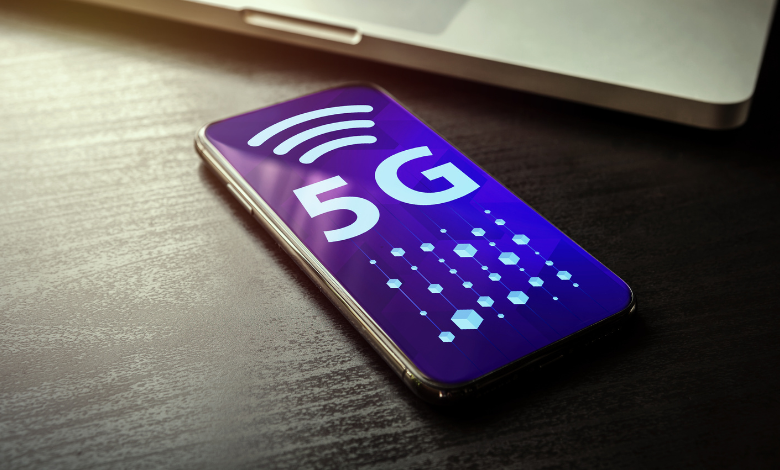T-mobile go5g grandfathering

If you’re a T-Mobile customer, you may have seen recent chatter: “Go5G removed from system,” or “my plan is now grandfathered.” You might be asking: what does “grandfathering” mean in this context? Should you worry about losing your features or promos? Is migrating to a new plan better?
I’ve dug into the announcements, user reports, and T-Mobile’s policy changes to help you understand exactly what’s going on. I’ll walk through what “grandfathered” means, who it affects, what you might lose (or gain), and weigh whether it makes sense for you to stay or switch.
To be upfront: there’s no one-size-fits-all answer. The best move depends on your usage, your devices, and how much the new plans offer versus what you already enjoy.
2. What is a “grandfathered” phone plan?
Before we zero in on Go5G, let’s clarify the concept of “grandfathering” in wireless / telecom.
Definition (in telecom): A grandfathered plan is an older plan that is no longer offered to new customers, but existing customers can continue on it under certain terms. You don’t lose it just because the carrier changed its offerings.
— That’s how the term is used when carriers revamp their plan lineups. The idea is: you won’t be forced off your plan (at least immediately) just because they introduced newer ones.
Carriers use grandfathering for a few reasons:
-
To avoid angering existing customers by abruptly canceling their plans
-
To simplify migration to new plan portfolios
-
To ensure a transition period while managing legacy systems
But there’s a catch: being on a grandfathered plan often comes with limits. The carrier may stop offering promotions, new features, or may eventually phase you off. It’s a sort of “you stay where you are, but new growth happens elsewhere” approach.
You’ve likely seen this concept with carriers in the past—older unlimited plans, older legacy bundles, etc. The key is: you hold onto the plan until you choose to change (or until the carrier forces it, which is rare but possible).
Read Also: How to Sign the Letter T in ASL: Step-by-Step Guide & Practice
3. Timeline: How T-Mobile phased out Go5G
Now, how did T-Mobile handle Go5G?
3.1 Removing Go5G from new sign-ups
At some point in 2025, T-Mobile quietly removed its Go5G plans from its retail systems—meaning new customers cannot sign up for them via typical signup portals. Many reports suggest that as of June 13, 2025, Go5G was officially “removed from system” and considered grandfathered, meaning new customers are steered toward newer plans.
So if you look at T-Mobile’s website now, you’re unlikely to find Go5G as an available option for new accounts.
3.2 Announcing grandfathering and internal signals
T-Mobile also appears to be encouraging migration from even older plans by nudging customers toward newer ones. Reports indicate that employees activating lines are being discouraged from using Go5G, effectively pushing new customers to Experience or newer portfolio plans.
While T-Mobile hasn’t posted a flashy press release saying “Go5G is retired,” internal system changes and communications to staff and customers strongly suggest the transition is underway.
3.3 What “removed from system” / “grandfathered” means
When a plan is removed from the system, it means:
-
The plan is no longer selectable for new accounts or line additions
-
Internal systems may no longer show it as an active option
-
Existing customers can keep their plan (for now), under grandfathering rules
-
Migration or plan changes might require special handling
In the case of Go5G, T-Mobile is treating it similarly to how it has handled Magenta and older legacy plans in the past. In other words, existing Go5G customers keep their plan unless they choose to move.
4. Who qualifies, and what are the rules for grandfathered Go5G plans
Let’s get into who is affected and what constraints may apply.
4.1 Who is eligible
If you already had a Go5G plan (Go5G, Go5G Plus, Go5G Next, or some variants) before T-Mobile removed the plan from its offering, you likely qualify to be “grandfathered” under the legacy plan. In other words, T-Mobile is allowing existing customers to keep their Go5G plans.
If you were on an older T-Mobile plan (say Magenta, Simple Choice, etc.) or a different carrier, you won’t be able to newly adopt Go5G anymore.
4.2 Rules, restrictions, and caveats
Being grandfathered doesn’t always mean “no change forever.” Here’s what people report and what is likely:
-
You may not be able to switch back to Go5G after migrating to a new plan. Some customers claim T-Mobile told them that once they leave, they can’t return.
-
Some promos or discounts tied to new plans may not migrate to your grandfathered plan. A support rep reportedly told a user some promos wouldn’t transfer.
-
T-Mobile may limit what you can do: adding lines, upgrading devices, or using certain features might be restricted under grandfathering terms.
-
Over time, features may be deprecated or support removed (though not immediately).
In effect, the grandfathered status is a kind of “stay-as-is unless you act” arrangement, but not necessarily fully open to all new changes going forward.
5. Pros and cons of staying on a grandfathered Go5G plan
If you’re in that grandfathered group, the big question is: should you stay or actively migrate? Let’s weigh advantages and risks.
5.1 Pros of staying
-
Continuity / familiarity — You know what your plan gives you; no surprises from migration.
-
Avoid migration risk — Sometimes switching plans means losing promos, discounts, or eligibility.
-
Possibly lower cost (for your use case) — Your plan may still serve you well, especially if you don’t need new features.
-
Avoid learning curve — No need to reconfigure settings, re-optimize usage, etc.
If your plan covers your usage comfortably (data, hotspot, device upgrades), and you’re not chasing every new perk, staying may be the safer path.
5.2 Cons / risks
-
Missed new features or perks — New plans often introduce better hotspot allowance, bundled services, or enhanced network features.
-
Promo / trade-in limits — Reports indicate device promotions may be scaled back or excluded for legacy / segmented discount plans.
-
Vulnerability to later changes — T-Mobile could gradually erode benefits or force migration in the long term.
-
Price creep — Sometimes carriers raise fees or reduce discounts over time, even for grandfathered plans. Some users worry that their “cheap” plans may slowly become less favorable.
-
Incompatibility with new programs — Some new features or programs may require a newer plan to join (e.g. certain bundled services or device upgrade paths).
So staying is safe in the short term, but there is risk over years.
6. How T-Mobile’s new plan structure compares
If you do consider migrating (or even if you just want to see what you might gain or lose), here’s how the newer T-Mobile plans stack up against Go5G legacy.
6.1 New plans: Experience More, Experience Beyond, etc.
T-Mobile has rolled out new offerings—Experience More and Experience Beyond—which appear to replace Go5G / Go5G Next in many respects.
These plans bring some of the perks previously associated with Go5G, plus upgrades:
-
More hotspot data (e.g. 60 GB, 250 GB in some cases)
-
Bundled streaming services like Netflix, Apple TV Plus, Hulu in some tiers
-
Price guarantee for base rates over multiple years
-
Satellite connectivity in certain plans (for now)
However, a key change: taxes and fees are no longer included in the base rate—they can be added on separately. That means the “price lock” applies only to the base rate, not to these extra costs.
So the comparison is not apples to apples: you gain perks and guarantees, but lose some predictability in total cost (due to extra fees).
6.2 When migrating makes sense
A migration might be wise if:
-
You rely heavily on hotspot or streaming services
-
You want the bundled features that old Go5G doesn’t offer
-
Your legacy plan is becoming restrictive
-
The difference in cost is offset by the perks
-
You want to future-proof against deprecation
In short: if your usage or expectations have evolved, the move might pay off.
7. Device promotions, trade-in, and eligibility under grandfathering
One of the trickiest parts of being on a grandfathered plan is how device deals and upgrade programs are handled.
7.1 Promo value and segmented plans
Leaked internal documents suggest T-Mobile may reduce promotional values (e.g., device credit, trade-in offers) for “segmented” rate plans (like discount versions of Go5G, Go5G Next) compared to standard plans. For example, a 55+ or military-discounted Go5G Next may get a lower promo credit than the non-discounted version.
This signals that legacy / discounted plans may be intentionally deprioritized for promotional generosity.
7.2 Forever Upgrade → Yearly Upgrade
T-Mobile’s Forever Upgrade program allowed eligible customers to upgrade iPhones every two years with trade-in benefits. But as of December 7, 2023, T-Mobile shifted to a Yearly Upgrade model for eligible plans (including Go5G Next, Go5G Plus, etc.).
Under this system:
-
You can upgrade every year (after 6 months and paying 50% of device cost)
-
The phone deals you get match what new customers receive
-
However, if you switch to an ineligible plan, you may lose eligibility for this upgrade benefit
So if your grandfathered plan becomes ineligible (or you migrate away), you risk losing these upgrade perks.
In short: being on a legacy plan may gradually shut you out of the best device offers, especially as T-Mobile focuses its incentives on newer plans.
8. What you should do (practical steps)
Given the uncertainties, here’s a suggested plan of action if you’re on (or think you might be on) a grandfathered Go5G plan.
8.1 Check your current plan status
-
Log into your T-Mobile account (web portal or app)
-
Check line-by-line plan names: is it “Go5G,” “Go5G Plus,” “Go5G Next,” or another label?
-
Look for any notes about plan changes or deprecation
-
Document all discounts, promos, and device deals you currently benefit from
8.2 Talk to T-Mobile support
-
Call or chat and ask: “Is my Go5G plan still active / grandfathered?”
-
Ask: “If I migrate to Experience More / Beyond, which promos / benefits will carry over?”
-
Get answers in writing (screenshot or keep chat logs)
-
Ask specifically whether you can return to Go5G if you change your mind
This helps you avoid surprises.
8.3 Compare cost vs benefit
-
Calculate your current total cost (including fees)
-
Compare to new plan cost + extra perks
-
For heavy users (hotspot, streaming), see if new plan’s extras offset any increased base or hidden costs
8.4 Time migrations smartly
-
If you decide to move, do it during a promotional period
-
When lines are added, device upgrades considered, or seasonal promos are live
-
Avoid migrating mid-billing cycle
8.5 Alternatives: consider other carriers
If your legacy plan is gradually becoming less favorable, it might be worth seeing what other carriers offer—especially if new plan perks matter more to you than loyalty to T-Mobile.
9. Future outlook & risks
Let me offer some thoughts (and some cautious predictions) based on industry patterns and what I see with T-Mobile.
9.1 Will T-Mobile force migration?
Historically, carriers sometimes eventually phase out grandfathered plans by limiting service, features, or forcing transitions. It’s unlikely to happen overnight—but over years, you might see:
-
Removal of certain features (e.g. hotspot speed caps)
-
Exclusion from new offers or programs
-
A push or incentive (or slight penalty) to migrate
So, while doomsday migration isn’t imminent, risk is real.
9.2 Legacy plan shelf life
Legacy plans for many carriers survive for years—even a decade or more—before significant changes. But the longer you’re on one, the greater the risk that some elements will degrade.
9.3 What to watch
-
Unexpected surcharges or fees creeping in
-
Trimming of promotional offerings
-
Notices from T-Mobile about “changes to legacy plans”
-
Announcement of forced migration windows
Staying alert is your best defense.
10. FAQs
Will I lose my Go5G plan now that it’s grandfathered?
No—if you already have it, T-Mobile is allowing you to keep it under grandfathered status. But you may lose some flexibility or perks over time.
Can I add a new line and stay on Go5G?
Potentially yes, but since Go5G is removed from new line activation systems, additions may require special handling or be disallowed. You should check with support.
If I migrate away, can I return to Go5G?
Many user reports say you might lose the ability to return. T-Mobile support has reportedly told some customers this explicitly.
Will my current promotions (discounts, freebies) carry over when I migrate?
Some may, some may not. That’s why it’s crucial to ask support exactly which promos will transfer. There are reports of promos being left behind if you change plans.
Will pricing increase over time for grandfathered plans?
It’s possible. While many legacy plans are left untouched, carriers sometimes raise fees or reduce discounts. Some users express concern that “cheap” plans may gradually lose value.
11. Conclusion
Here’s what I take away from all this:
If you’re on a Go5G (or variant) plan already, being grandfathered gives you stability—for now. You can keep what you have without being forced out immediately. But that doesn’t mean indefinite freedom. Over time, you may face limitations: fewer promos, degraded access to device deals, or eventually pressure to migrate.
Whether you stay or switch depends heavily on your needs. If your plan serves you well and you don’t care about newer perks, staying is a conservative, low-risk choice. If, however, your behavior (heavy hotspot, streaming, etc.) has outgrown your legacy plan, migrating might offer more value despite some tradeoffs.
Whatever you do, don’t migrate rashly. Document your current terms, ask support for clarifications, compare total cost vs benefit, and choose when conditions are favorable.



